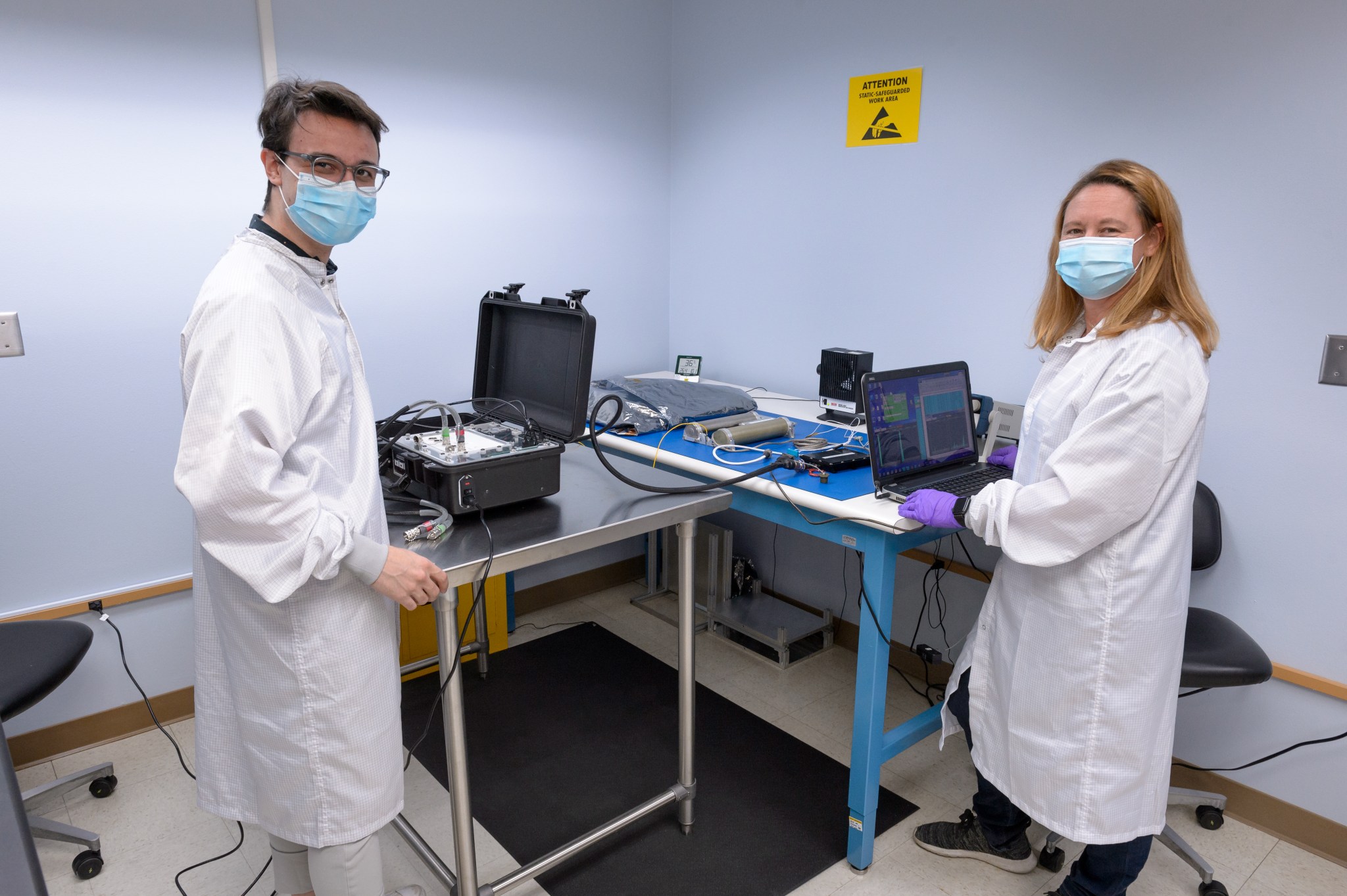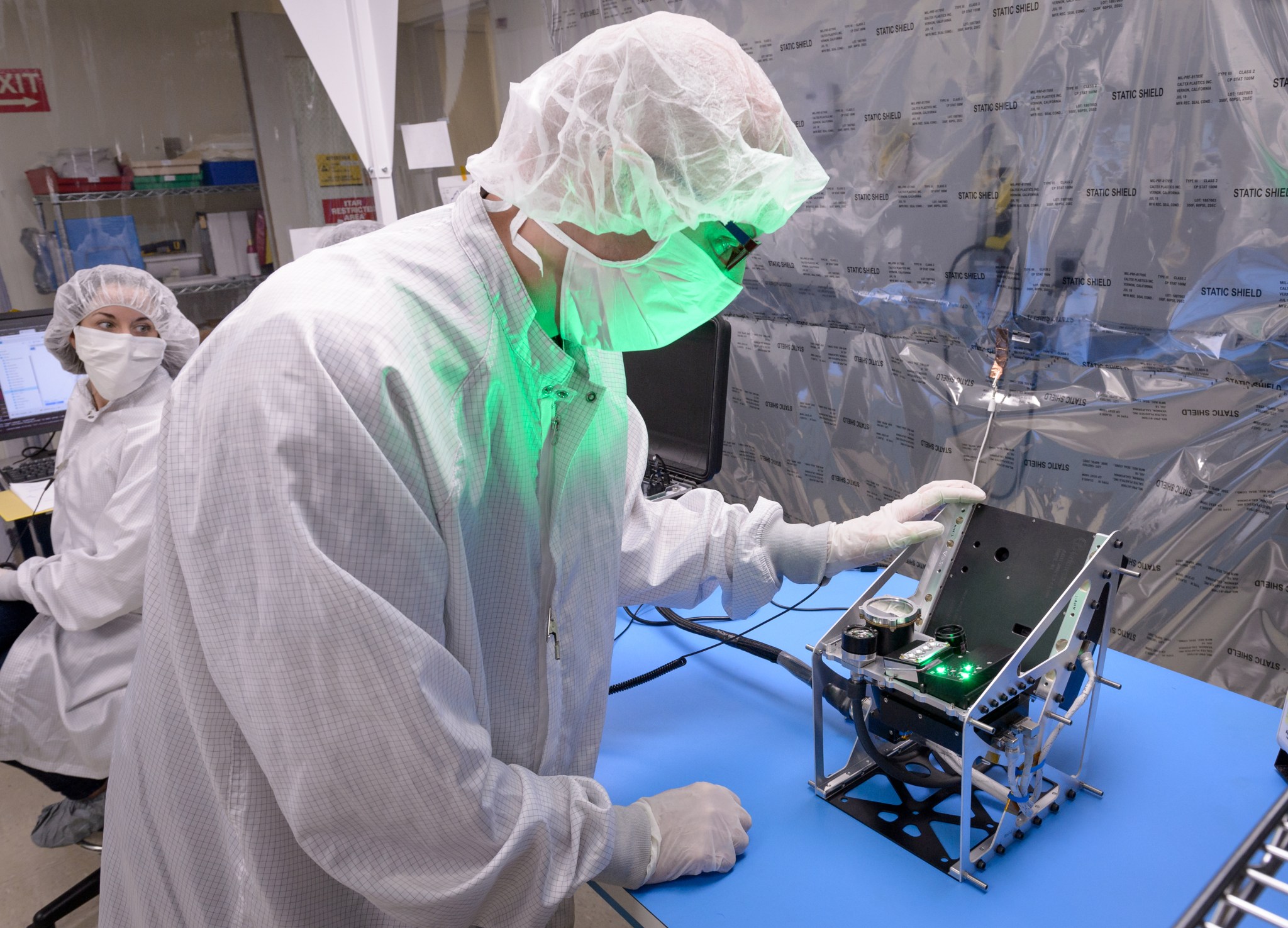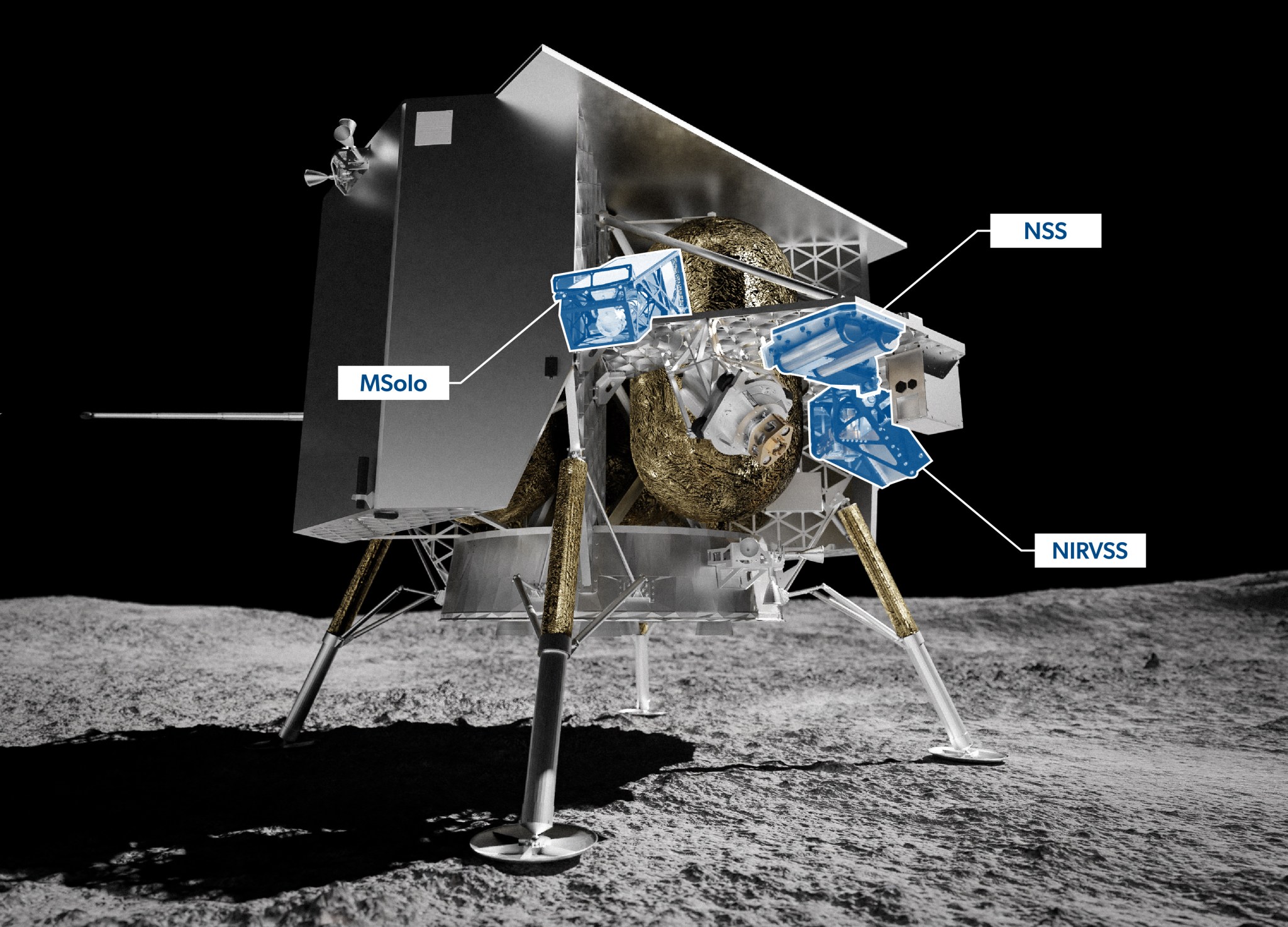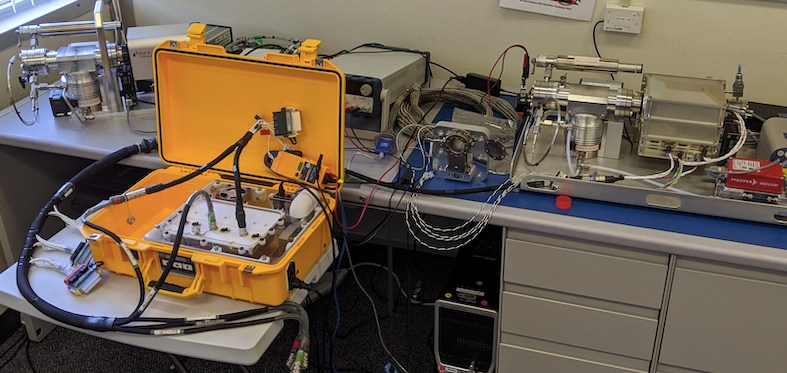
NASA is preparing to send three new water-hunting science instruments to the Moon as payloads on the first lander flight by Astrobotic through the Commercial Lunar Payloads Services, or CLPS, initiative.
As preludes to NASA’s Volatiles Investigating Polar Exploration Rover, targeted to launch in 2023, these versions of the VIPER instruments will study what happens when Astrobotic’s Peregrine lander touches down this year on the northern region of the Moon and blasts water exhaust and other residue across the lunar surface.
Members of the NASA instrument teams recently worked with Astrobotic to complete a series of end-to-end tests between the instrument hardware and systems simulating the lander. The test set out to verify that the power, data, and software interfaces between the instruments and the lander are working properly. The Payload Interface Mobile Simulator, or PIMS, tests were conducted at NASA’s Ames Research Center in California’s Silicon Valley and the agency’s Kennedy Space Center in Florida as one of the final steps before the flight instruments are integrated onto the Peregrine lander.

“These tests are a first handshake between our instruments and the lander’s systems to make sure we can successfully collect the data we want to get on the Moon,” said Amanda Cook, the lead integration and test engineer for the Near Infrared Volatile Spectrometer System, or NIRVSS, instrument at Ames.
The instruments include NIRVSS and the Neutron Spectrometer System, or NSS, as well as the Mass Spectrometer Observing Lunar Operations, or MSolo. Complimentary payloads will also be attached to the lunar lander, and able to provide datasets to confirm and compare results from the VIPER instrumentation set. A total of 11 NASA payloads will be delivered to the Moon on Astrobotic’s lander. Another company, Intuitive Machines, is also delivering NASA payloads to the lunar surface this year.
The three instruments are designed to work in synergy. Attached to the exterior of the Peregrine lander, they will have a close-up view of the lunar surface after the lander’s propulsion system sprays the ground during landing. Peregrine’s propulsion system creates water and other residue such as carbon dioxide and hydrocarbons. With these materials introduced in a controlled manner on the surface of the Moon, it sets up an experiment for scientists to study what happens when they’re released to the lunar environment by natural means. That information about how these materials travel across the lunar surface is key to understanding the history of the water cycle on the Moon and the pathways that lead to the trapping of water at the poles.
Over the course of several days and with dramatic swings in temperature, the study will provide clues as to how water molecules travel across the lunar surface. The shadow of the lander will be closely observed as the instruments watch how water molecules collect there as a proxy for the naturally occurring cold, permanently shadowed regions of the Moon. The study also will inform how much contamination of the surface occurs during landing activities – important information for lunar exploration efforts like VIPER.
“We expect to see some of the water go away as sunlight heats the area up – but how much water sticks to grains of lunar soil on the surface is a key answer we don’t know yet,” said Anthony Colaprete, VIPER’s project scientist. “The water molecules may bounce off and hop around the surface until they’re destroyed, or we might see them collecting in the lander’s shadow. That would help us understand the pathways that bring water to the poles.”
That science will all be made possible by the integration of NASA instruments with Astrobotic’s Peregrine lander. Because of the rigorous PIMS testing, both NASA and Astrobotic are prepared to further our understanding of the Moon together.

For news media:
Members of the news media interested in covering this topic should reach out to the NASA Ames newsroom.



























